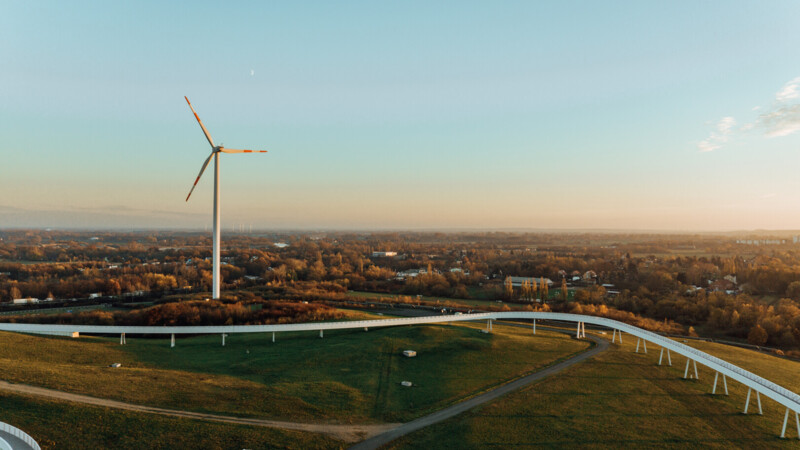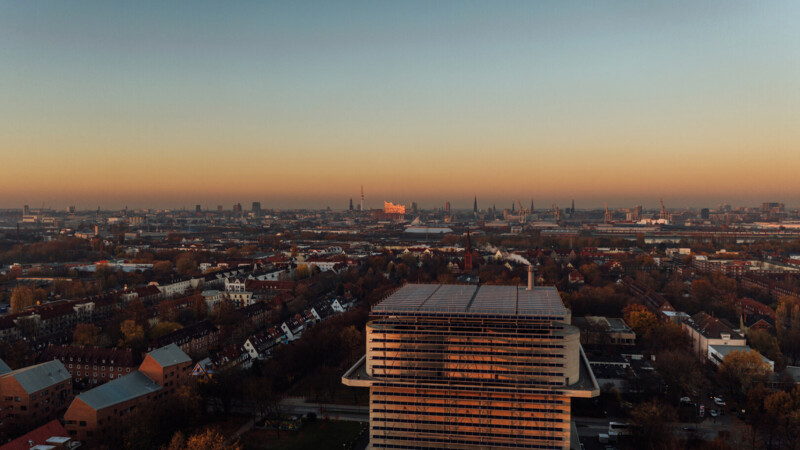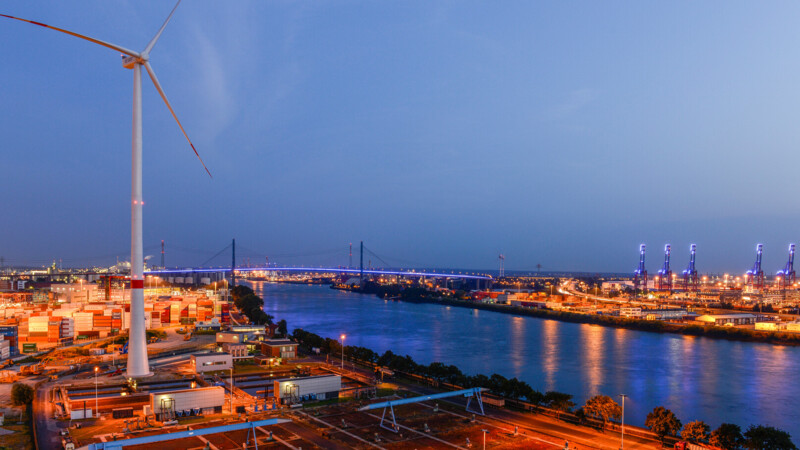Hamburg is a world capital of wind energy and many a strong breeze and the occasional gentle wind blows there. Although the city boasts a mere 65 wind turbines, Hamburg is a champion of wind energy and hosts the leading international "Wind Energy" trade fair every year. The city is also home to many global manufacturers. While Hamburg has established itself as the seat of company headquarters and research departments, many production sites have been set up on the North Sea and Baltic Sea coasts.
For thousands of years now, man has harnessed wind energy to grind grain, to reclaim land, to explore the world aboard ships and to fly kites, balloons and other flying machines. A new book published in October 2020 by Hanser Verlag and authored by Daniel Hautmann focuses on wind turbines for generating electricity and gives many other examples of how mankind can exploit the possibilities of wind without emitting harmful gases. Hautmann, a freelance scientific journalist specializing in wind, has penned six articles for Hamburg News illustrating stunning examples of wind power in Hamburg.
Hamburg as capital of wind energy
Wind has always been important for Hamburg. The keyword is Hanse. Until a few decades ago, large freight ships docked in Hamburg and can still be admired in the port. They were followed by the steam engine, and later the diesel engine, which literally hoisted the sails. However, sail propulsion systems have been experiencing a revival and no wonder. The gases emitted by giant freighters in the 21st century literally stink to high heaven. Some Hamburg-based companies and clever inventors are now coming up with ideas to make shipping more environment-friendly. (Other articles in this series will focus on this trend.)
From “wind ships to wind cars”
Many more ways of using wind may yet emerge. Wind turbines do not necessarily have to be on land and have three rotating blades. Existing floating and flying wind turbines are already reaching unimaginable altitudes and exploiting the strong and steady gales there. Wind power could become capable of base load in this way. If they are set up a far from the coast, such machines could supply whole continents with environment-friendly electricity.

Even cars can progress efficiently using wind power, as examples show. One of the fastest so-called headwind vehicles hails from Stuttgart - the birthplace of the automobile. But the cities of Kiel and Flensburg are also home to some fantastic wind turbine cars that compete at the annual Aeolus Race in Den Helder, Netherlands. Wind power plays a major role at sea as well. Freighters sailing the high seas are becoming cleaner and run on gas, fuel cells or electricity generated by photovoltaics with solar power. Thousands of years ago when engines were still far away in the future, people realized the enormous potential of wind at sea.
Stones as energy storage systems
The same applies to hydrogen, the issue of the moment, and the gas may yet hold the key to the future. Produced from environment-friendly electricity sources like wind, hydrogen could fuel industries like steel and cement, mobility, the heat sector and electricity generation. However, reliance on hydrogen alone should be avoided. For this reason, we will also focus on thermal storage – an impressive example of which can be found in Hamburg.
A guest article by Daniel Hautmann, freelance scientific journalist and author.
Sources and further information
Book:

Mankind has used wind power for thousands of years. Wind power is now more important than ever amid ongoing climate change and the conversion of energy to renewable energy sources. Daniel Hauptmann’s book shows other possibilities of harnessing wind power, when the power of inventors and investors are added on a large scale. The author goes far beyond the usual perspective of wind power for generating electricity and gives other fascinating examples - from cargo ships and wind-powered racing cars to floating wind turbines. The author highlights the technical facts and the environmental impact of each example. Daniel Hautmann: Windkraft neu gedacht. Erstaunliche Beispiele für die Nutzung einer unerschöpflichen Ressource, Hanser Verlag, Munich 2020, 229 pages, hardcover edition EUR 39.99, EUR 31.99.
Author:
Daniel Hautmann, 45, has been writing about technology, energy and the environment for around 20 years. He is a trained industrial mechanic, editor of trade journals and specializes in regenerative energies, especially wind power. He has competed with a world champion windsurfer and flew headfirst in a glider with the European aerobatics champion. His texts have been published in Brand Eins, Technology Review and the Süddeutsche Zeitung, among others. He occasionally presents radio shows, produces podcasts and writes books. www.danielhautmann.de.
More
Similar articles

Hamburg's Energie Dock seeking to avoid constraints in energy grid

EU sustainable heat project to launch in Hamburg

Hydrogen as an energy carrier of the future
